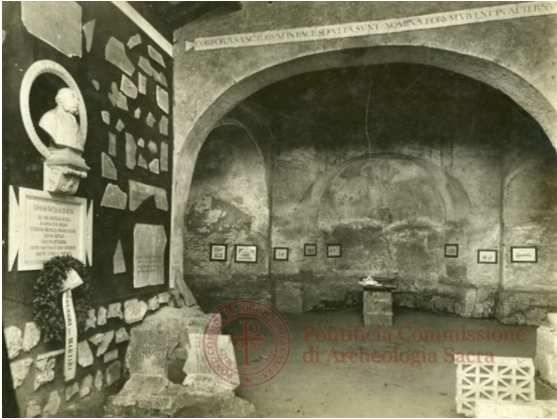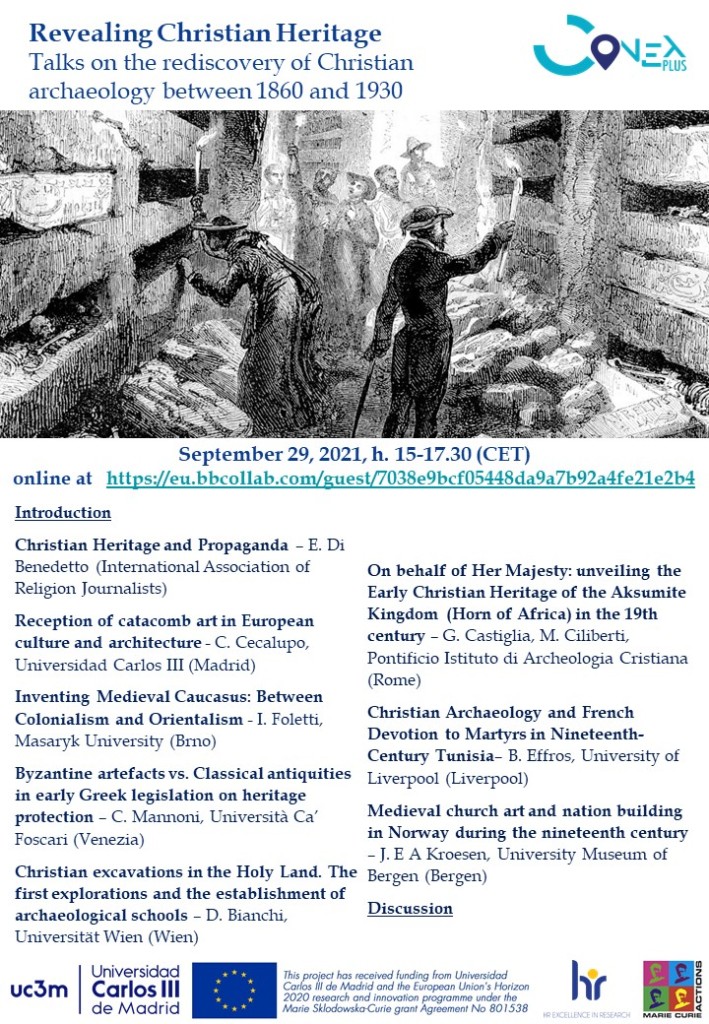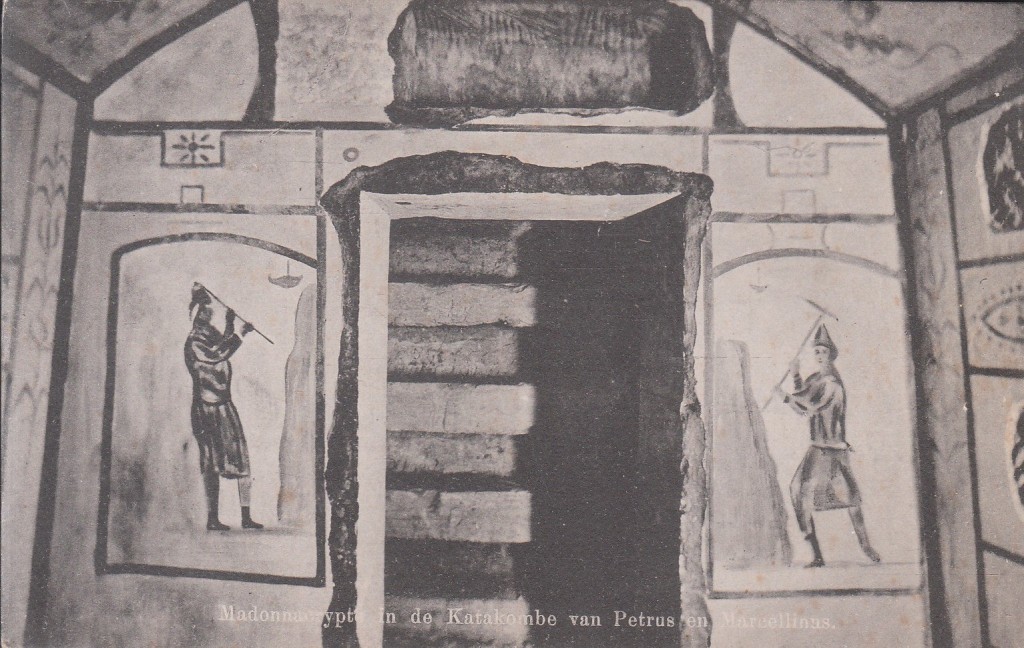Many European pilgrims visited the Roman catacombs during the Jubilee period of 1450. Some of them left stories about them, and among them the most interesting is “Ye solace of Pilgrimes” by the Augustinian John Capgrave (considered lost until the 20th century).
Capgrave arrived in Rome probably from 1449 for the general chapter of the order and stayed there for a long time. Between 1449 and 1452 he wrote his work, considered to this day the highest point of pilgrim travel literature of the English Middle Ages, a true model for pilgrim books for visitors from northern Europe for the following jubilee years.
The work is structured in three parts. The first part consists of 24 chapters. Capgrave enriched the treatment of each topic with many quotations from past authors and especially with many legends and hearsay, but also with what he saw himself.
Chapter VII deals with “How in Rome there are many cemeteries”. It is in fact a valuable snapshot of the knowledge of Christian cemeteries held by fifteenth-century pilgrims:
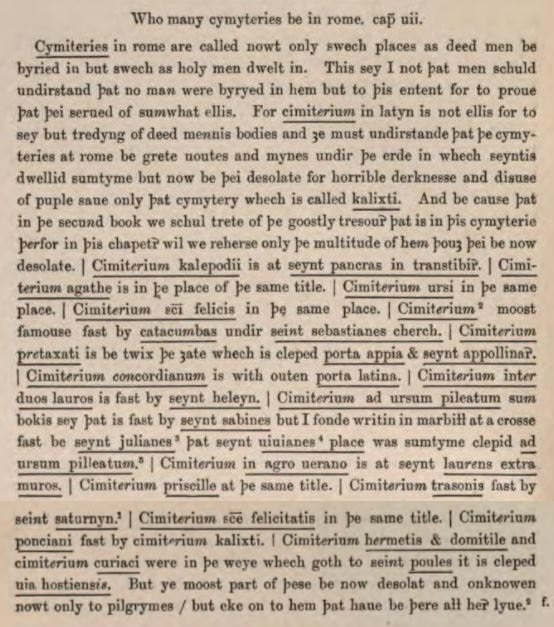
«In Rome, are called cemeteries not only the places where the dead are buried, but also those where the saints lived. I say this not because I want people to believe that no one was buried there, but to show that they also served other purposes. In Latin, cimiterium means nothing other than walking over the bodies of the dead, and you should know that the cemeteries in Rome are great underground vaults and tunnels where the saints once lived. Now, however, they are desolate places, because there is a horrible darkness and people no longer frequent them. The only exception is the cemetery of Callisto. Since in the second book we will deal with the spiritual treasures to be found in the cemeteries, in this chapter we will merely enumerate them, even though they are now abandoned. The cemetery of Calepodius is at San Pancrazio in Trastevere. The cemetery of Agatha is near the title with the same name, and so are the cemeteries of Orso and San Felice. The cemetery of Callisto is the most famous, and is near the catacombs, under the church of San Sebastiano. The cemetery of Pretestato is located between Porta Appia and San Apollinare. The cemetery of Concordiano stands outside Porta Latina. The cemetery called inter duos lauros is near St. Helen. The cemetery ad ursum pileatum some books say is near Santa Sabina, but at a crossroads near San Giuliano I found written on a tombstone that the place where Santa Bibiana is located was once called ad ursum pilleatum. The cemetery in Agro Verano is in San Lorenzo fuori le mura. The cemetery of Priscilla stands by the same title. The cemetery of Trasone is near San Saturnino. The cemetery of Santa Felicita is near the same title. The cemetery of Pontian is near the cemetery of Callistus. The cemetery of Hermes and Domitilla and the cemetery of Cyriacus were on the road leading to St Paul’s and called Via Ostiense. Now, however, these cemeteries are mostly abandoned and unknown, not only to pilgrims, but also to those who have lived there all their lives».
The second part of the book deals with the churches of Rome and the spiritual treasures they contain. It describes, in 65 chapters, the main basilicas and all the stationary churches.
Chapter III (‘Della chiesa di San Sebastiano, in cui Capgrave’) describes his visit to the cemetery galleries beneath the church, thus providing valuable information on how a pilgrim in 1450 visited the cemetery of St Sebastian.
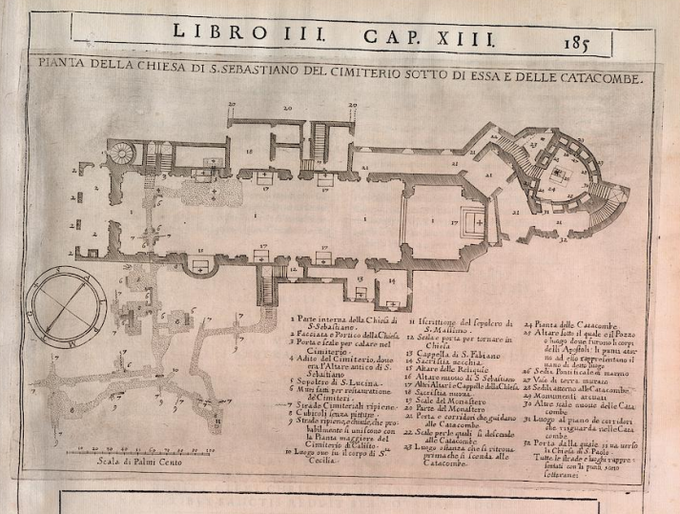
«The church of St Sebastian is two miles from St Paul’s and more than a mile outside the walls of Rome […]. The cemetery of Callistus is under the church; it is a cave or an underground excavation, made in a ground that seems neither stone nor earth, but something between the two, and has a red colour. There are many caves enclosed with stones, and one is said to have been St Peter’s chapel. Only if you have a torch in your hand can you see anything, because it is very deep underground. In fact, going down one side of the church there are thirty-two steps. And I think there are as many steps to the other side, where the angel served mass to St Gregory. The cemetery is so long that if one does not linger in the chapels, but goes straight ahead, by the time he has said “Miserere mei Deus” four times he will have walked through it. Forty-six popes were buried here, and each of them has given great indulgence to the place; Saint Cecilia was also buried here, and there is still her monument artfully carved in white marble. […] The cemetery was built by Pope Calixtus, and it is said that he did it for two reasons: one is so that the leaders or popes of the Church could dwell here safe from the danger of tyrants, because it was necessary for them to live longer in order to be able to give confirmation to the neophytes; the other is that he wished to bury there the martyrs who died for the love of Christ, and since this could not be done freely, he consecrated this secret place. Next to the church is a large shelter which they call catacomb [now referring to the triclia of St Sebastian]. Catacomb is a strange term, since it is not found in Latin books and no grammarian mentions this compound word. The common people say that cata, pronounced as it is written, means above, or all, and cumbo or cumbas means low or deep. The word therefore sounds like all low, or all deep, for the shelter is very deep underground. At one time it was a great dungeon, and to enter it one descends twenty-eight steps. Some say that this place was the waste dump of the butchers who lived in the area. In fact you can still see many walls of large buildings that were once the slaughterhouses of Rome. It is said that Peter and Paul were thrown here out of contempt, and this account is partly true and partly not, for that this place was a slaughterhouse is true, and that they were thrown here out of contempt by those who killed them is not true. Therefore we will tell the truth about this story. […]. Contradictions like this are always found in the chronicles, but since it does not touch the articles of faith, everyone can choose the version he wants».
Bibliography:
Ye Solace of Pilgrimes : a description of Rome, circa A.D. 1450. Capgrave, John, O.E.S.A; Mills, C. A; Bannister, Henry Marriott. British and American archaeological society of Rome. New York 1911.
